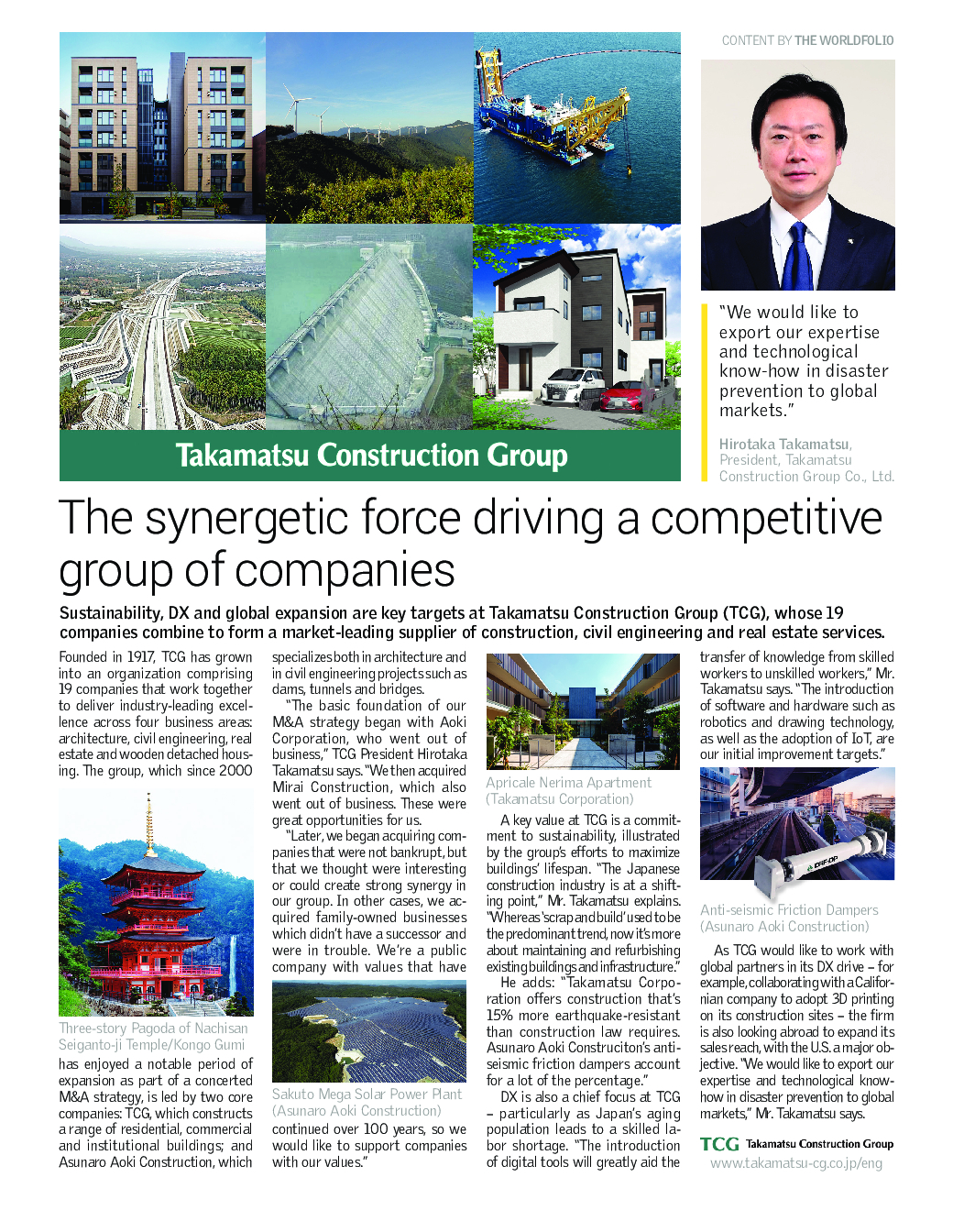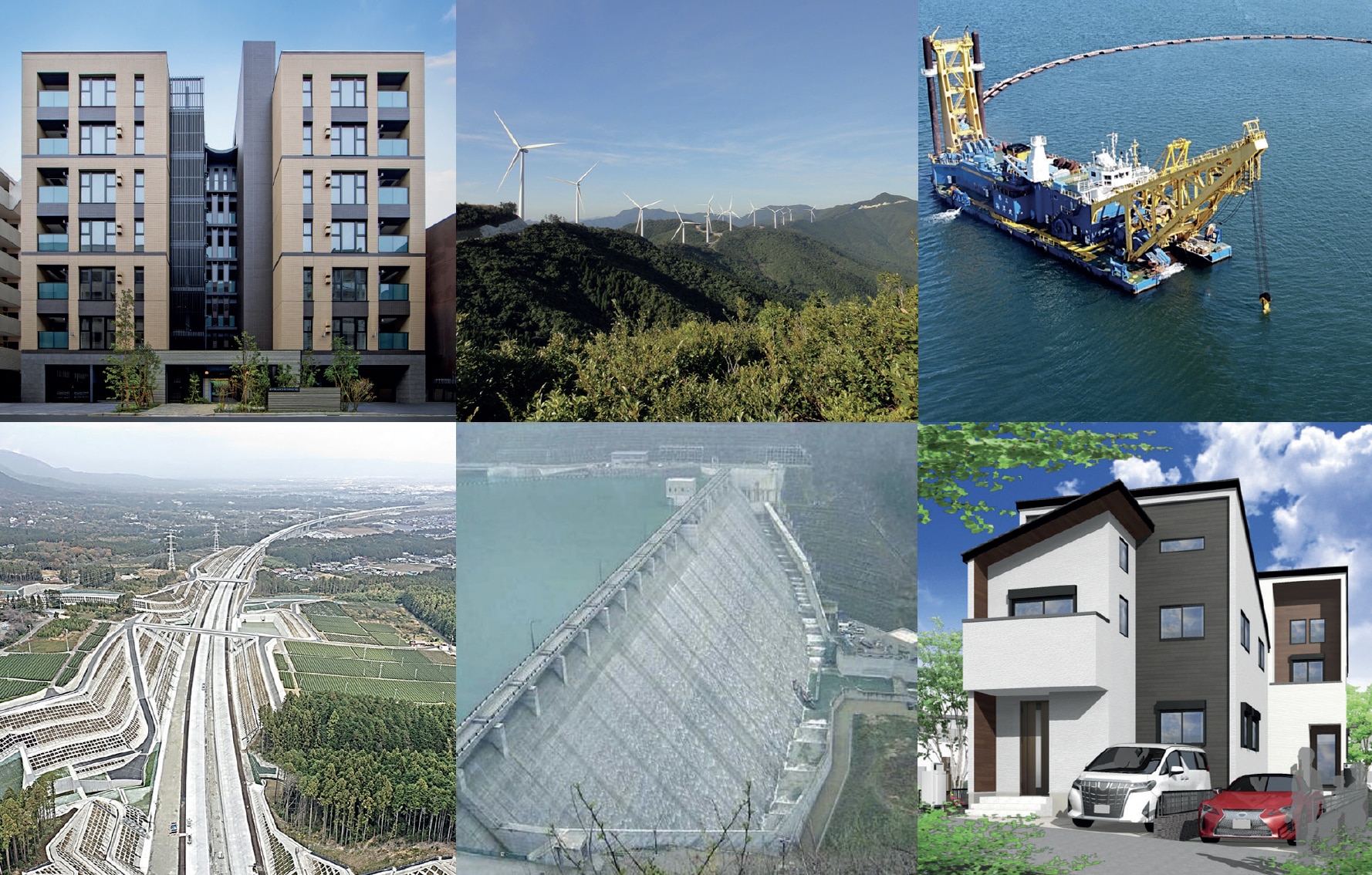Sustainability, DX, and global expansion are key targets at Takamatsu Construction Group, whose 21 companies combine to form a market-leading supplier of construction, civil engineering, and real estate services.
“We want to export our expertise and technological know-how in disaster prevention to overseas markets.”
Hirotaka Takamatsu, President, Takamatsu Construction Group Co., Ltd.
Founded in 1917, Takamatsu Construction Group has grown into an organization comprising 21 companies that work together to deliver industry-leading excellence across four business areas: architecture, civil engineering, real estate, and wooden detached housing.
The group, which since 2000 has enjoyed a notable period of expansion as part of a concerted M&A strategy, is led by two core companies: Takamatsu Corporation, which constructs a range of residential, commercial and institutional buildings; and Asunaro Aoki Construction, which specializes both in architecture and in civil engineering projects such as dams, tunnels and bridges.
“The basic foundation of our M&A strategy began with Aoki Corporation, who went out of business,” TCG President Hirotaka Takamatsu says. “We then acquired Mirai Construction, which also went out of business. These were great opportunities for us.
“Later, we began acquiring companies that were not bankrupt, but that we thought were interesting or could create strong synergy in our group. In other cases, we acquired family-owned businesses which didn’t have a successor and were in trouble. We’re a family business, so we want to support companies with our values.”
A key value at TCG is a commitment to sustainability, illustrated by the group’s efforts to maximize buildings’ lifespan. “The Japanese construction industry is at a shifting point,” Mr. Takamatsu explains. “Whereas ‘scrap and build’ used to be the predominant trend, now it’s more about maintaining and refurbishing existing buildings and infrastructure.”
He adds: “We offer construction that’s 15% more earthquake-resistant than construction law requires. Our anti-seismic friction dampers account for a lot of the percentage.”
DX is also a chief focus at TCG – particularly as Japan’s aging population leads to a skilled labor shortage. “The introduction of digital tools will greatly aid the transfer of knowledge from skilled workers to unskilled workers,” Mr. Takamatsu says. “The introduction of software and hardware such as robotics and drawing technology, as well as the adoption of IoT, are our initial improvement targets.”
As TCG would like to work with global partners in its DX drive – for example, collaborating with a Californian company to adopt 3D printing on its construction sites – the firm is also looking abroad to expand its sales reach, with the U.S. a major objective. “We want to export our expertise and technological know-how in disaster prevention to overseas markets,” Mr. Takamatsu says.
PDF of the original post


